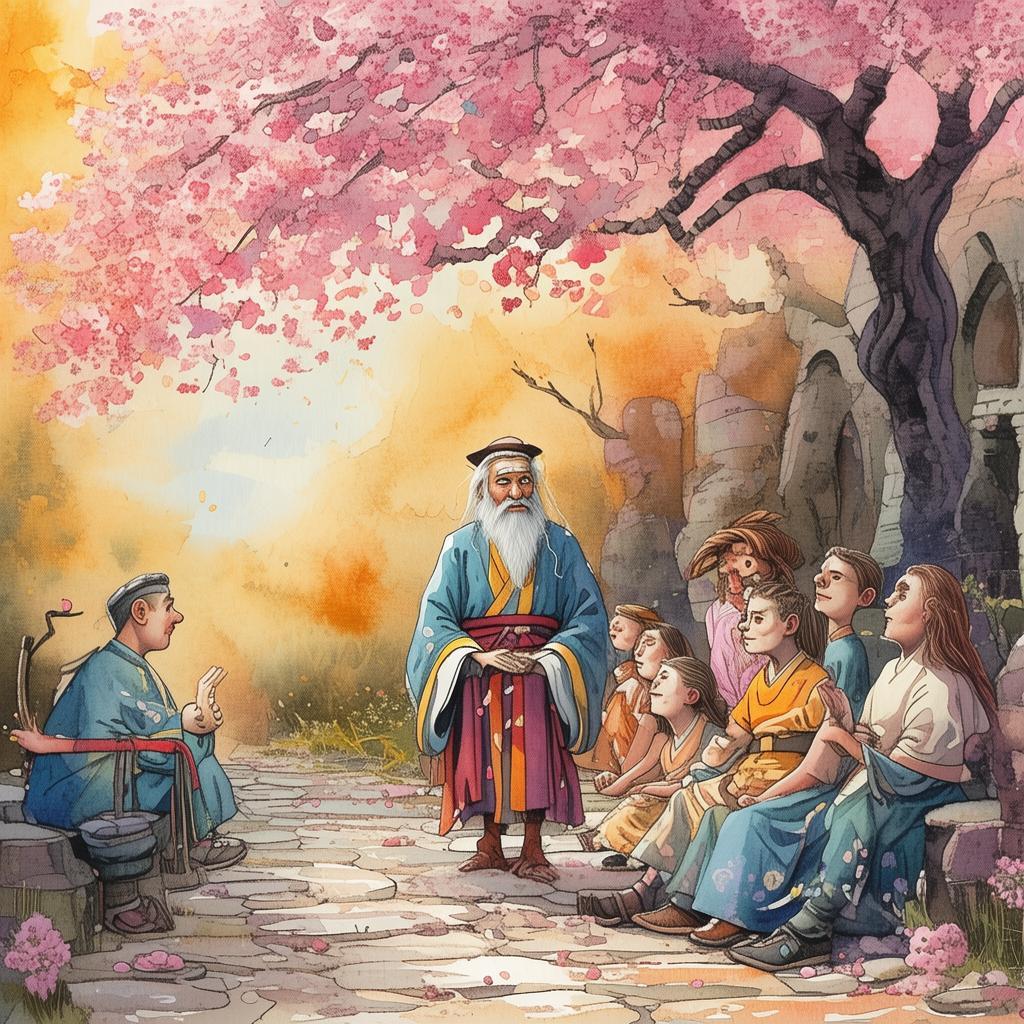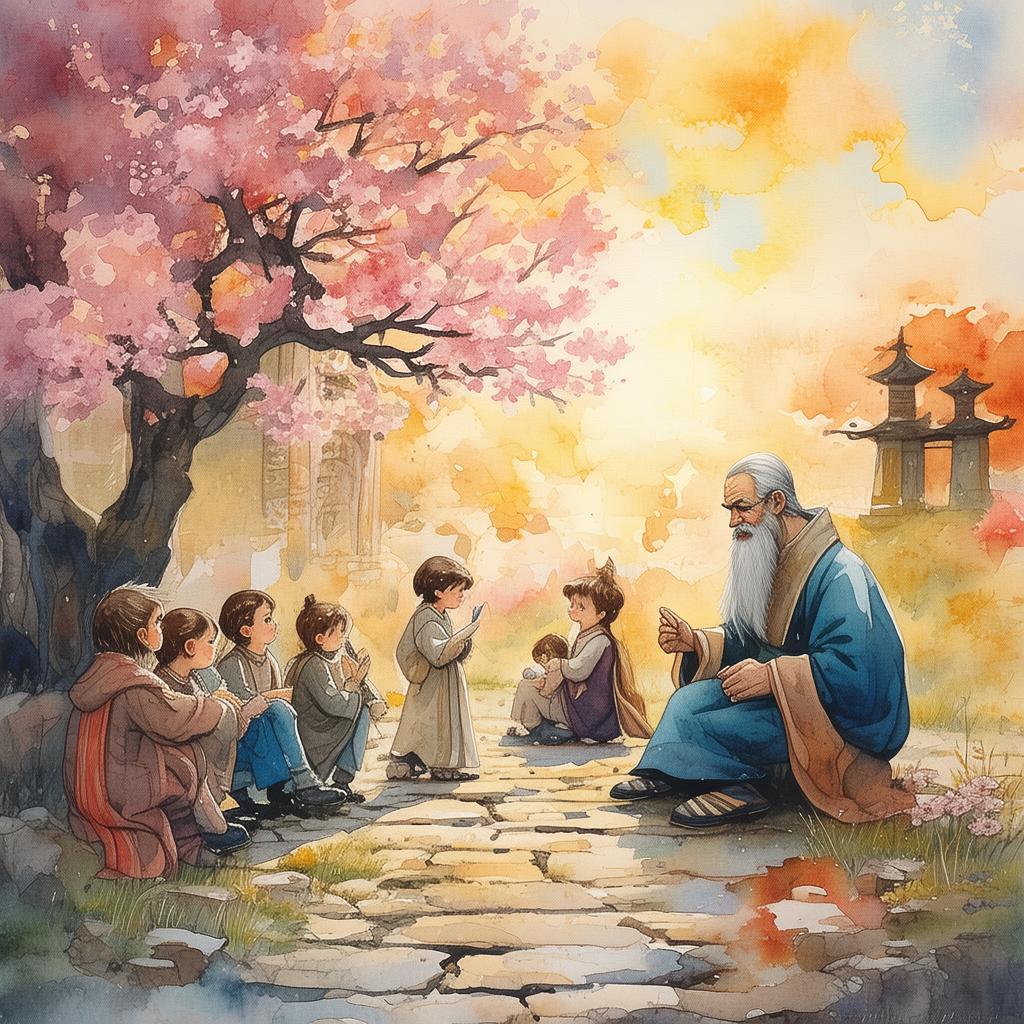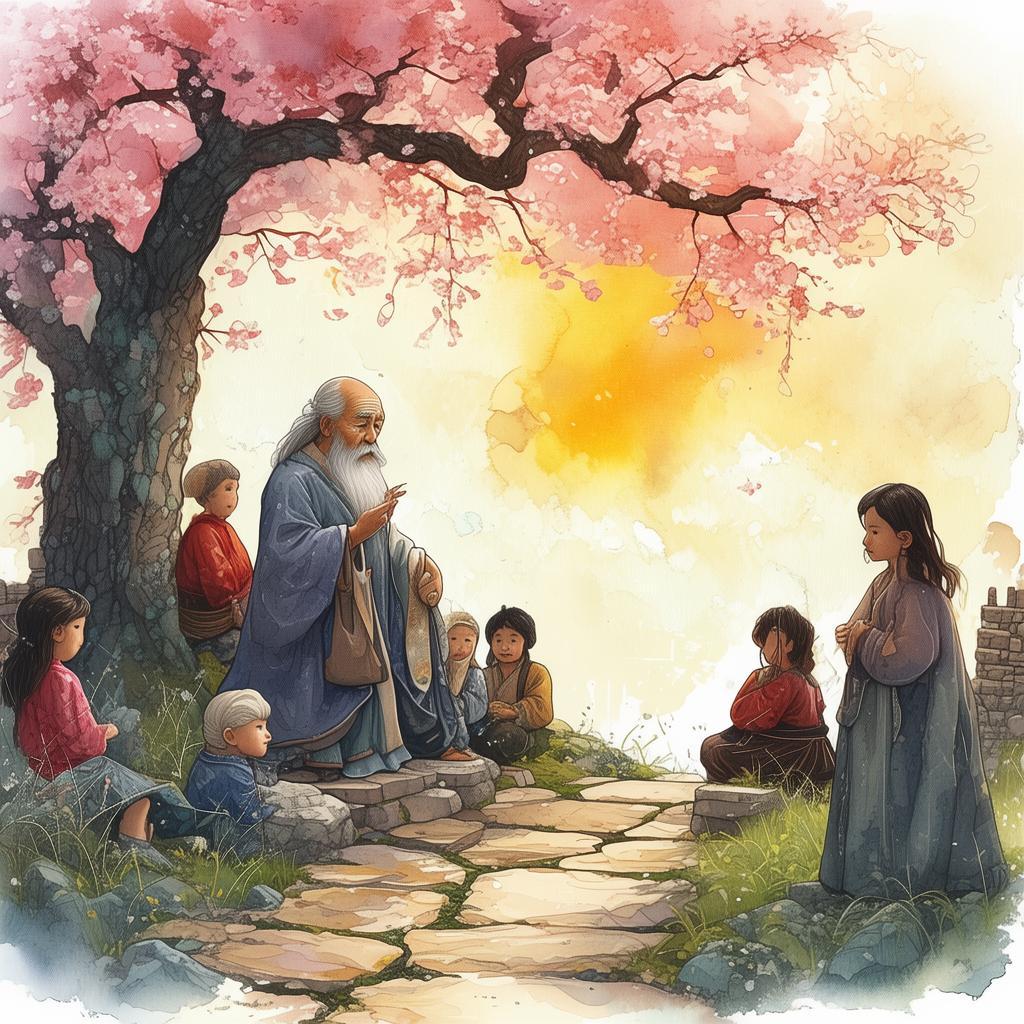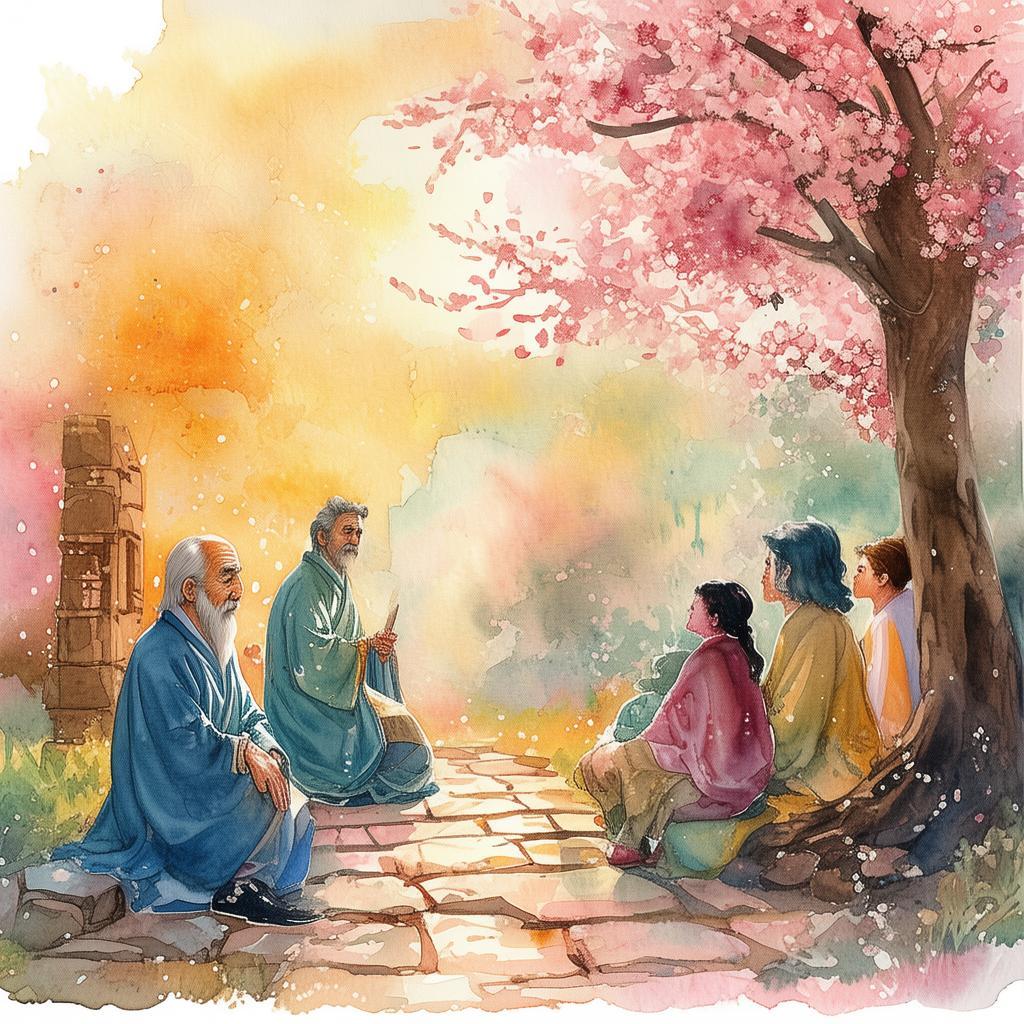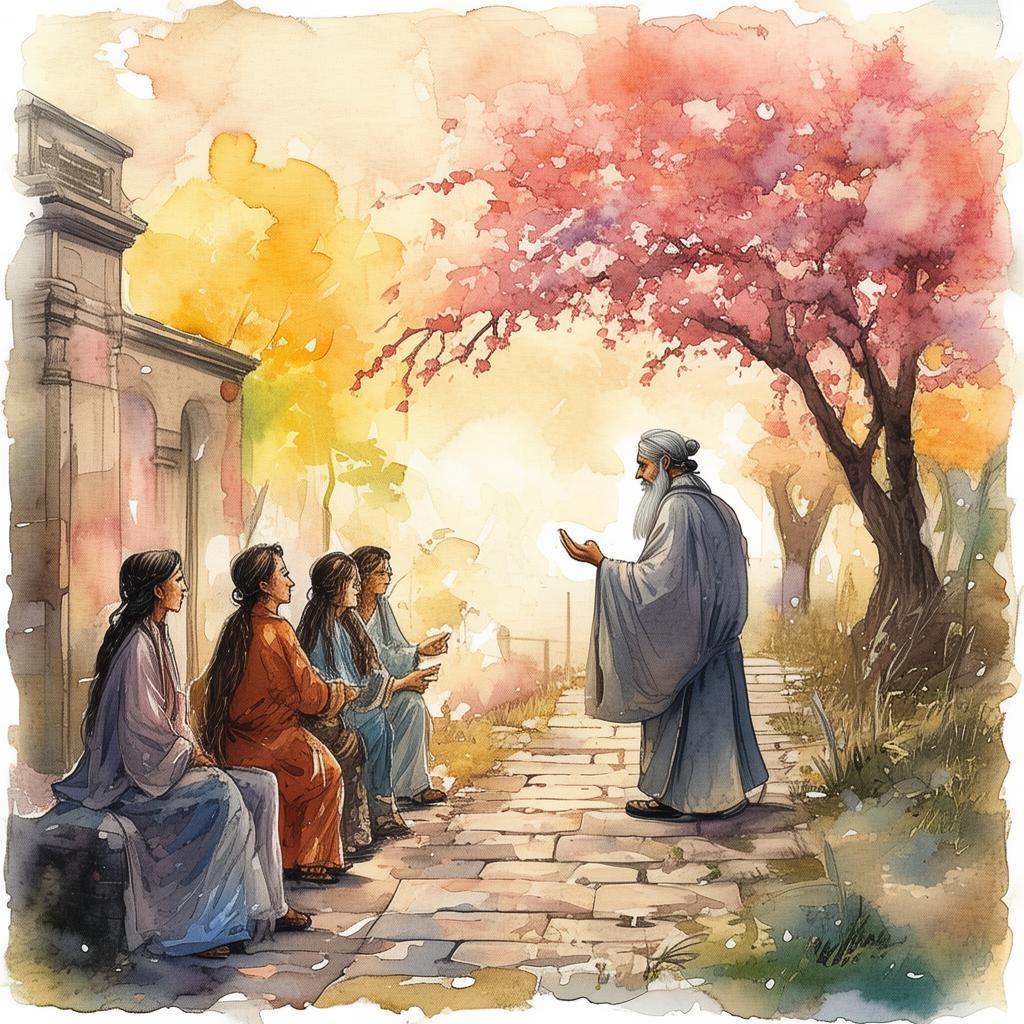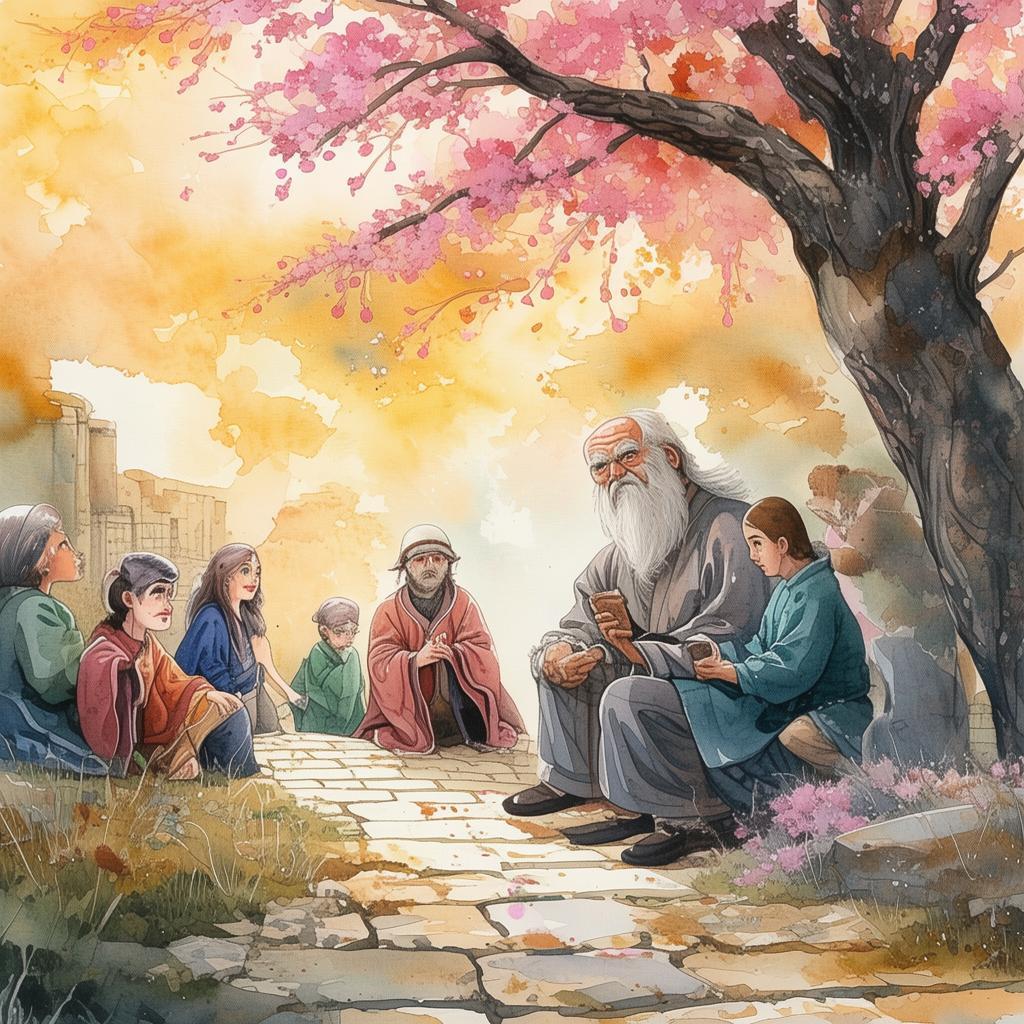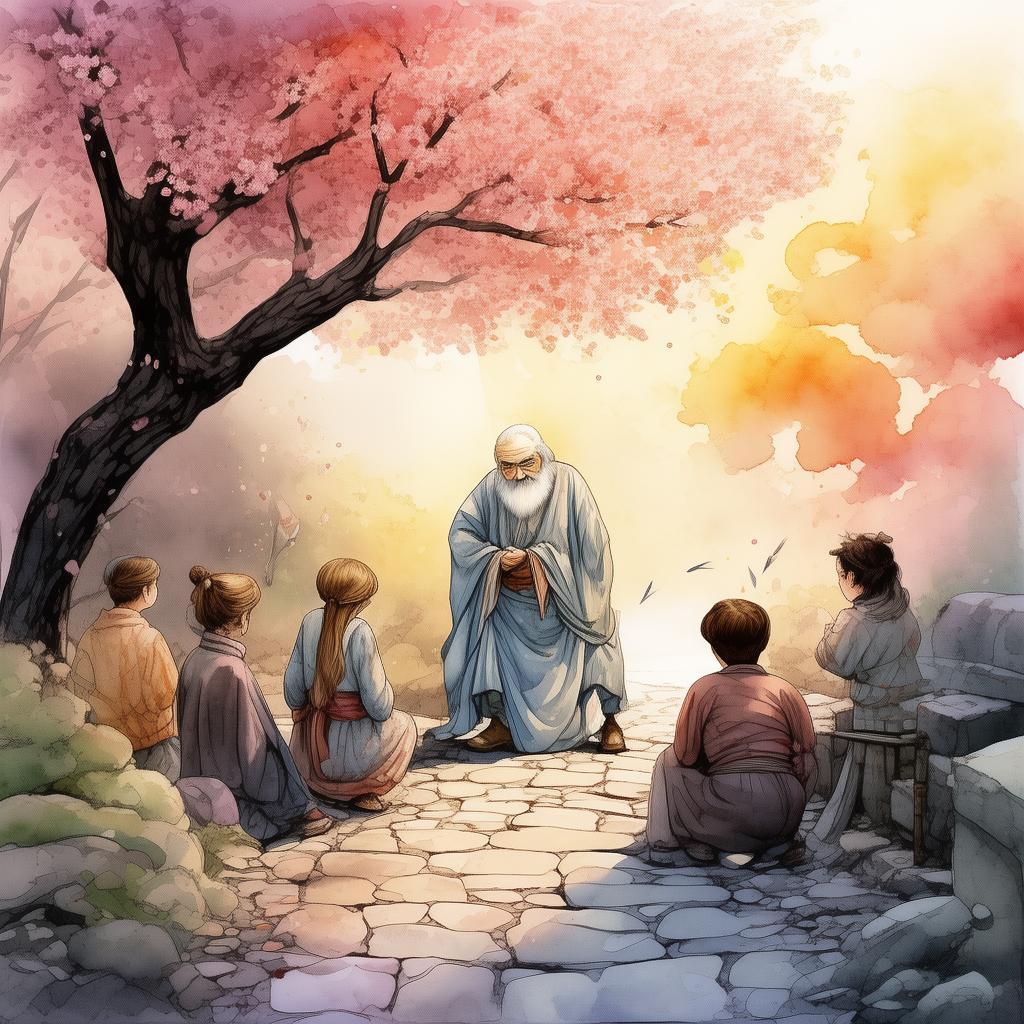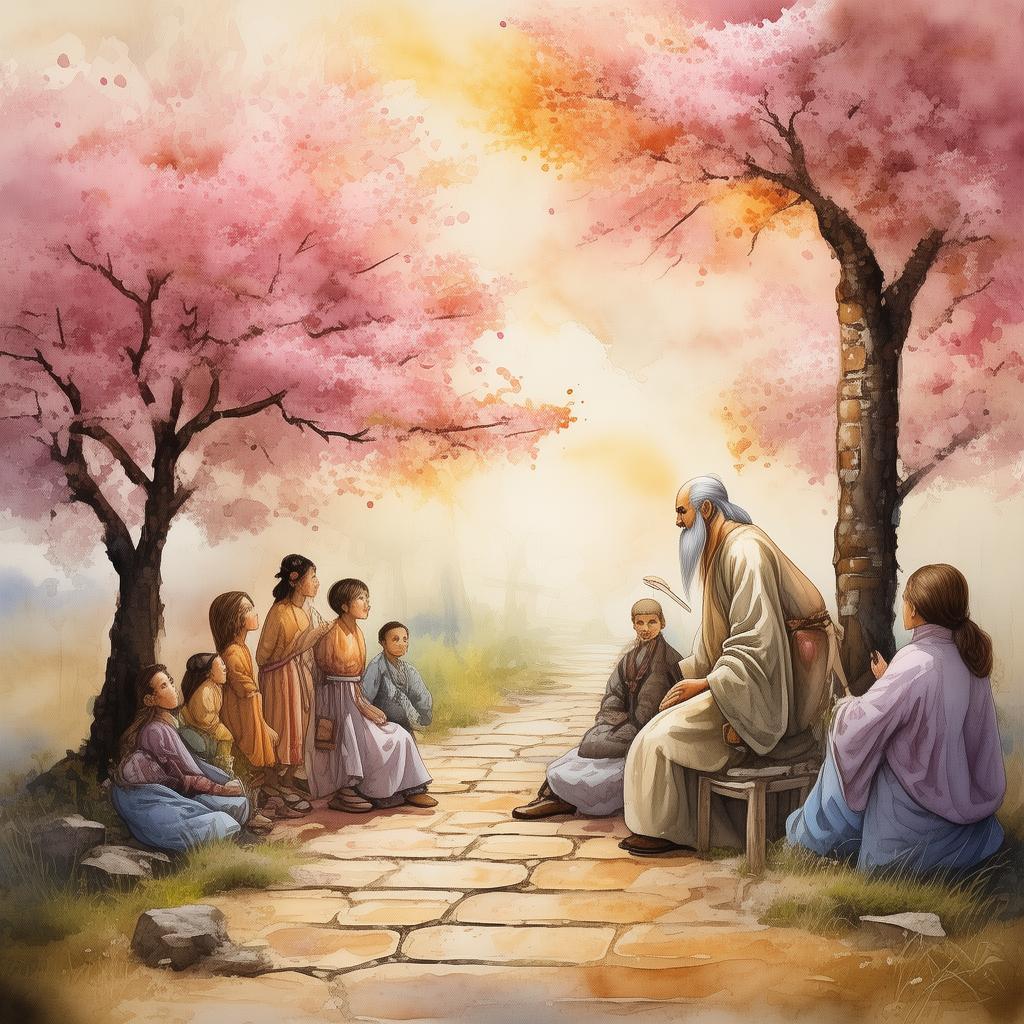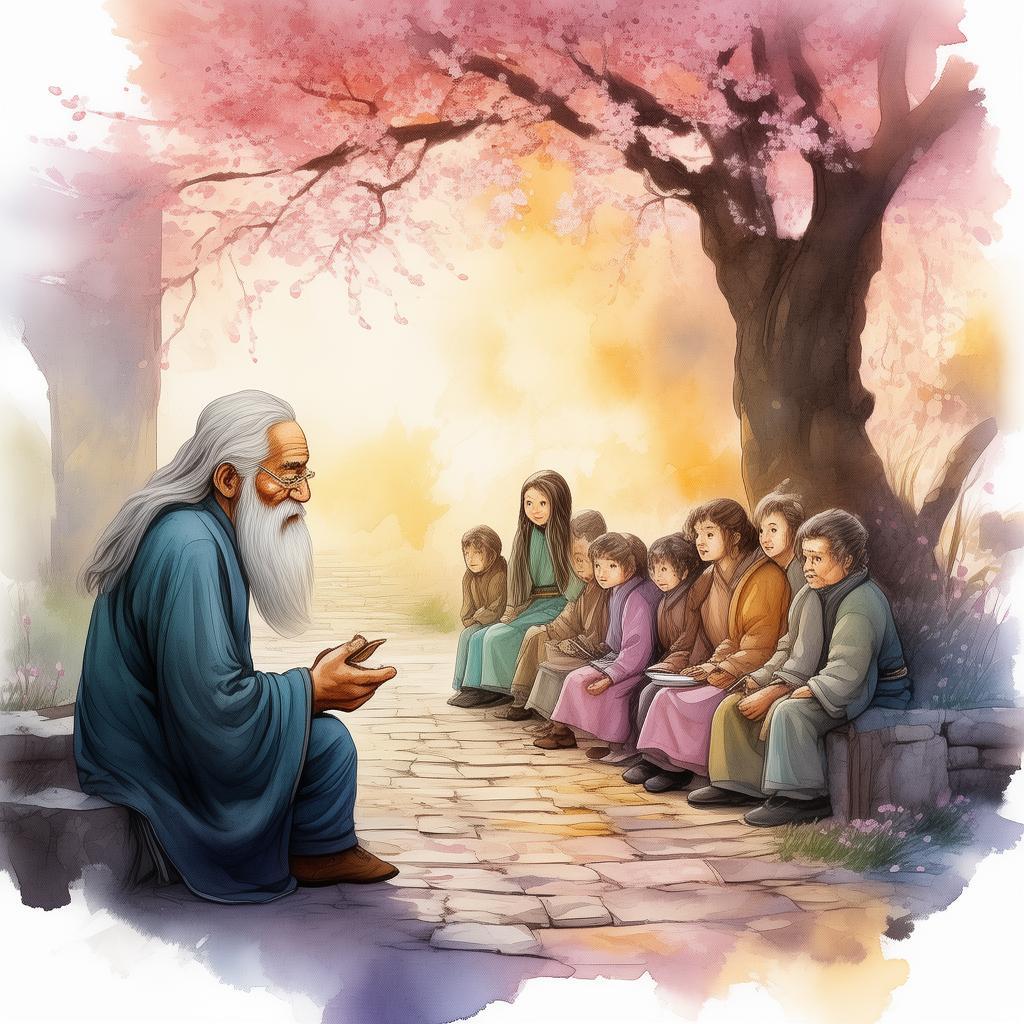Redemption in the Shadow of the Great Wall: The Tale of a Second Life
In the vast expanse of the Hebei province, where the Great Wall stretches its ancient embrace, there was a tale of a hero whose name was as legendary as the stones themselves. He was known as the Iron Knight, a warrior whose might could shake the earth, whose sword could cut through the mightiest of enemies. His life was a tapestry of battles and victories, a saga that echoed through the ages. Yet, beneath the armor of his heroic facade, there lay a heart heavy with the weight of a life lived without peace.
The Iron Knight's Redemption: A Hebei Hero's Second Life begins on a crisp autumn morning, as the sun rose to paint the sky in hues of orange and gold. The Iron Knight stood before the Great Wall, his gaze fixed upon the distant horizon. The wall, a testament to the strength of the people who built it, seemed to whisper tales of old, tales of battles won and lost.
It was here, amidst the silence of the ancient stones, that the Iron Knight found himself at a crossroads. The path of his first life had been one of glory, but it had also been a path lined with the blood of fallen foes and the sorrow of lost friends. He had fought for honor, for the land, and for the kingdom, but the cost had been dear. His heart was heavy with regret, and he knew that the only way to redemption was through change.
As he stood there, a sense of purpose began to stir within him. He turned his back on the path of battle and began a journey that would change him forever. He journeyed through the mountains and across the plains, seeking not the clash of swords, but the harmony of nature. He learned the ways of the Tao, finding solace in the simplicity of the earth and sky.
His first act of redemption came when he encountered a village beset by drought and hunger. The villagers had turned to the local warlord, hoping for aid, but the warlord's heart was as hard as the stone of the Great Wall. The Iron Knight, now a man of peace, offered his assistance. He taught the villagers how to cultivate the land, how to fish the rivers, and how to live in harmony with their surroundings.
Word of his kindness spread, and soon, he was known not as the Iron Knight, but as the Hebei Hero who brought prosperity and peace. His story became a legend, a tale of redemption that echoed through the ages.
One day, as he walked the path that led to the Great Wall, he met an old friend, a fellow warrior who had once fought alongside him. The friend was a man of the old ways, still bound by the chains of war and conquest. He looked upon the Iron Knight with a mixture of awe and disdain.
"Why have you forsaken the path of glory?" the friend asked, his voice tinged with bitterness.
The Iron Knight turned to him, his eyes reflecting the wisdom of the Tao. "Glory is fleeting, but redemption is eternal. I have found peace in helping others, in teaching them the ways of life that do not end in blood and sorrow."
The friend was silent for a moment, then nodded slowly. "Perhaps you are right. The world needs more like you."
As the Iron Knight walked away, he felt a weight lift from his shoulders. He knew that his second life had only just begun, and that the path of redemption was long and arduous. But he also knew that every step he took was a step closer to the peace he sought.
The tale of the Iron Knight spread far and wide, inspiring others to seek redemption in their own lives. And so, the story of the Hebei Hero who found a second life in the shadow of the Great Wall became a beacon of hope, a reminder that even the mightiest of warriors could find a path to peace and redemption.
The Great Wall, a silent guardian of the Chinese land, had seen countless battles and witnessed the rise and fall of empires. It had stood as a testament to the resilience of the human spirit, a symbol of strength and unity. In the shadow of this grand structure, a story unfolded that would echo through the ages.
The Iron Knight, once a symbol of might and prowess, had found himself at the Great Wall, a place where his destiny was about to be rewritten. The wall, ancient and unyielding, seemed to hold the secrets of the past, and it was here that the Iron Knight's transformation began.
One evening, as the sun dipped below the horizon, casting long shadows on the stones, the Iron Knight sat down at the foot of the wall. He was a man of contradictions, a warrior who had shed more blood than he could count, yet now seeking something beyond the thrill of battle.
"Iron Knight," a voice called softly from the darkness behind him, "you seek redemption, but where do you begin?"
The Iron Knight turned to see an old monk, his face etched with years of contemplation. "I seek peace, but I am bound by the shadow of my past. How can I find redemption when I am still a man of war?"
The monk smiled, his eyes twinkling with the wisdom of the ages. "Redemption is not about forgetting the past, but about embracing it. It is about understanding the cost of your actions and choosing a different path."
The Iron Knight listened, his heart heavy with the weight of his decisions. He knew that the monk was right. He had to face his past, to understand the impact of his actions on others, and to find a way to make amends.
The next morning, the Iron Knight began his journey, not as a warrior, but as a student. He traveled to various monasteries, learning from the monks about the principles of peace, compassion, and harmony. He learned to meditate, to find inner strength, and to see the world through a different lens.
One day, as he walked along the Great Wall, he encountered a group of villagers who were being oppressed by a local warlord. The villagers were scared and desperate, their livelihoods threatened by the brute force of the warlord.
"Help us," the villagers pleaded, their eyes filled with fear and hope.
The Iron Knight, no longer the Iron Knight of old, stepped forward. He did not draw his sword, but instead offered his presence. He listened to the villagers' plight, offering them words of comfort and support.
"You do not need a warrior to protect you," he said. "You need a friend."
The villagers were taken aback by his words. They had grown accustomed to the sight of a warrior with a sword, ready to fight for their cause. But the Iron Knight had changed, and so had his approach.
He spent the next few months helping the villagers. He taught them farming techniques, helped them build better homes, and even taught them the art of self-defense without weapons. He became a symbol of hope, a man who had found a way to serve without the need for violence.
The warlord, noticing the growing strength and unity of the villagers, eventually relented. He saw that the Iron Knight's approach was more effective than his own brute force. The village was saved, and the Iron Knight's reputation as a peacemaker grew.
As the years passed, the Iron Knight continued his journey along the Great Wall, spreading the message of peace and harmony. He became a symbol of transformation, a man who had traded in the sword for the plow, and whose actions had changed the course of history.
The Great Wall, silent and enduring, had witnessed the Iron Knight's transformation. It had seen the rise of a warrior and the rebirth of a hero. And in the end, it was the wall itself that bore witness to the Iron Knight's redemption, a testament to the power of change and the eternal search for peace.
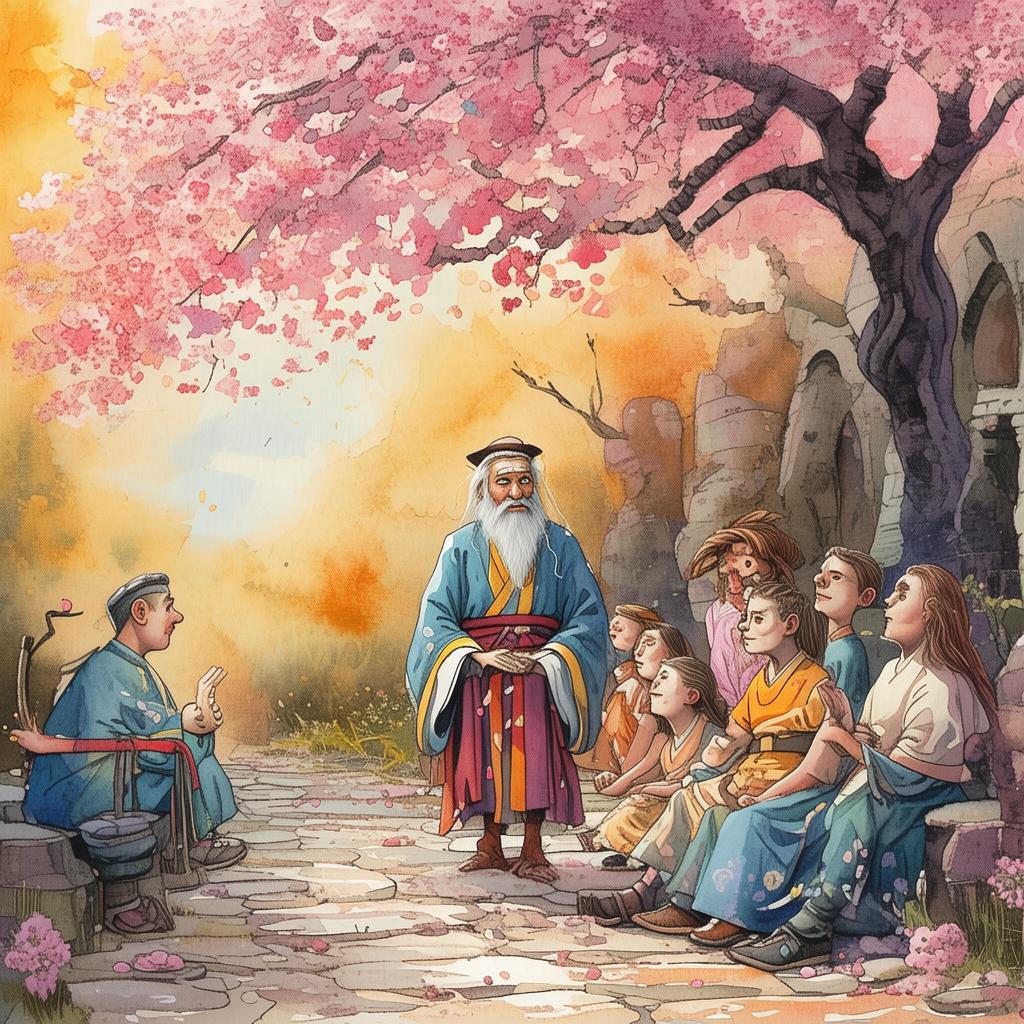
The tale of the Iron Knight's redemption became a legend, a story that would inspire generations to come. And as the sun set on the Great Wall, casting its golden glow on the horizon, it was clear that the path of the Iron Knight was one that would be remembered for centuries to come.
In the heart of the Hebei province, where the Great Wall stretches its ancient embrace, there lies a story of rebirth that has become the stuff of legends. It is the tale of the Iron Knight, a man whose life was once marked by the sound of battle and the clashing of swords. Yet, it is also the story of the Hebei Hero, a man who found his true purpose at the Wall's edge, where the line between life and death, between war and peace, blurred and then vanished.
The Iron Knight's journey began in the days of his youth, when he was known for his strength and his skill with a blade. He had fought in countless battles, his name a byword for fearlessness and valor. But as the years passed, he found that the thrill of victory was overshadowed by the sorrow of loss.
It was on a particularly cold winter's night, as the Iron Knight stood at the foot of the Great Wall, that he realized the cost of his life. The wall, a silent sentinel, seemed to whisper to him, "You have fought for honor, for land, for your kingdom, but at what cost?"
The Iron Knight felt a profound sense of unease. He had spent his life in the service of power, but now he was unsure of what service truly meant. It was then, in the silence of the night, that he made a vow to himself: to find a way to live that would honor the memory of those he had lost, and to seek a path that would bring peace to his own soul.
The next morning, as the first light of dawn painted the sky in hues of pink and gold, the Iron Knight set out on a journey that would change his life forever. He traveled to the mountains, seeking guidance from the wise and the learned. He sought out the teachings of the Tao, a philosophy that emphasized harmony with nature and the pursuit of inner peace.
As he journeyed, the Iron Knight encountered many challenges. He had to learn to trust his heart over his blade, to listen to the whispers of the earth rather than the shouts of war. He discovered that the greatest battles were not fought with swords, but with words and actions.
One day, as he walked along the Great Wall, he encountered a group of travelers who were in dire need of help. Their path was blocked by a band of robbers, and they were too weak to defend themselves. The Iron Knight, no longer the Iron Knight of old, stepped forward to protect them.
He did not draw his sword, but instead used his newfound wisdom to negotiate with the robbers. He spoke of the value of life, of the importance of living in harmony with others. The robbers, taken aback by his words, eventually agreed to let the travelers pass.
This act of kindness was the first step in the Iron Knight's transformation. He realized that his true power lay not in the might of his arms, but in the strength of his heart and the wisdom of his mind.
The Iron Knight continued his journey, helping those in need, teaching others the ways of peace and harmony. He became a symbol of hope, a man who had found a second life in the service of others. His story spread far and wide, inspiring many to follow in his footsteps.
And so, it was at the Wall's edge that the Iron Knight found his rebirth. He was no longer the warrior who had once thrilled to the sound of battle, but the Hebei Hero who brought peace and prosperity to the land. The Great Wall, a witness to his transformation, stood as a testament to the power of change and the enduring human spirit.
The tale of the Iron Knight's redemption and rebirth became a beacon of light, a reminder that even the darkest of nights can give way to the dawn of a new day. And as the Iron Knight walked along the Great Wall, his heart filled with a sense of peace and fulfillment, he knew that his journey was far from over. There were many more lives to touch, many more hearts to change, and many more stories to tell.
✨ Original Statement ✨
All articles published on this website (including but not limited to text, images, videos, and other content) are original or authorized for reposting and are protected by relevant laws. Without the explicit written permission of this website, no individual or organization may copy, modify, repost, or use the content for commercial purposes.
If you need to quote or cooperate, please contact this site for authorization. We reserve the right to pursue legal responsibility for any unauthorized use.
Hereby declared.
